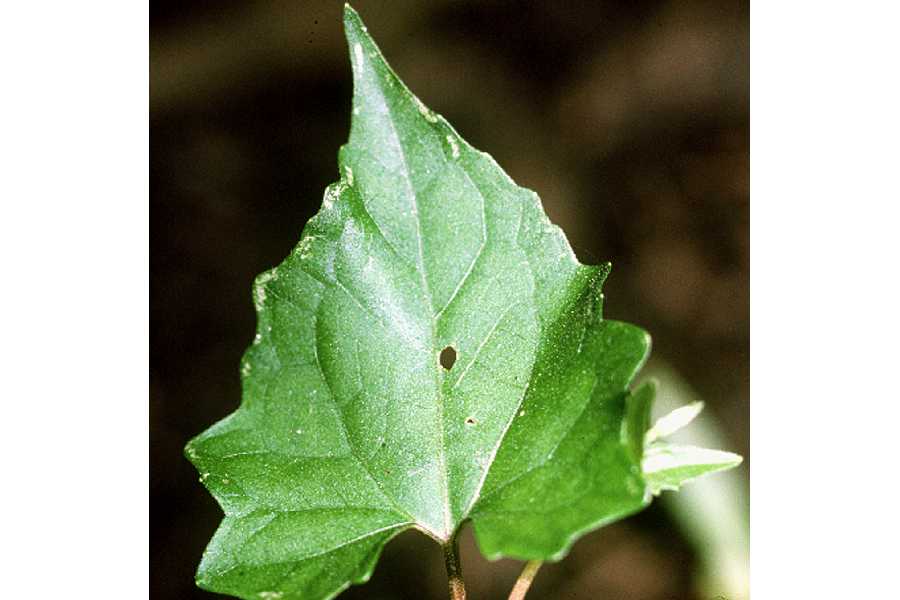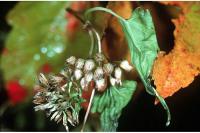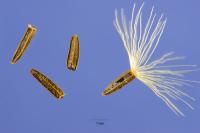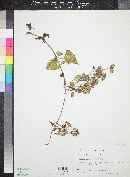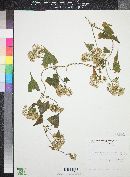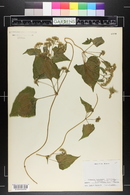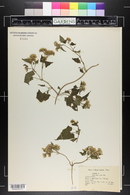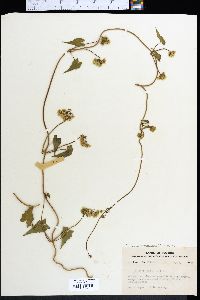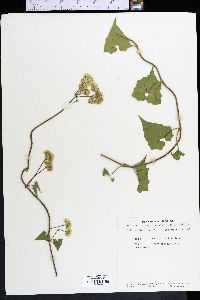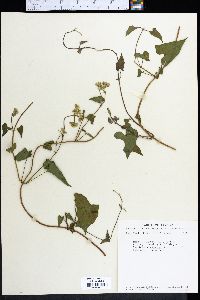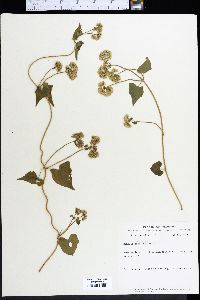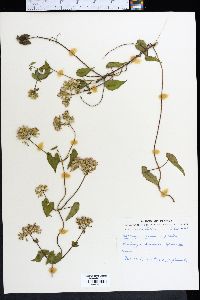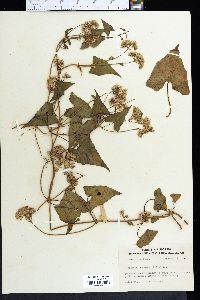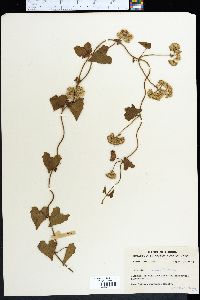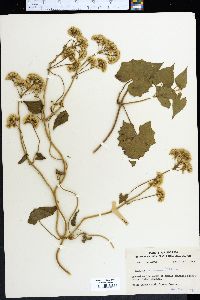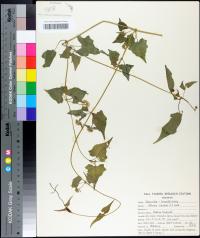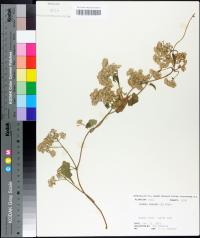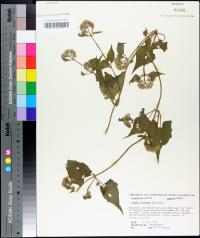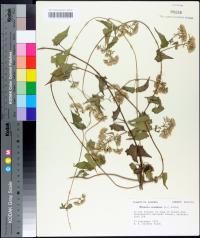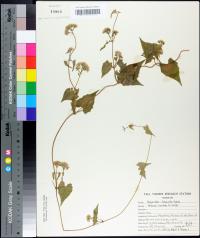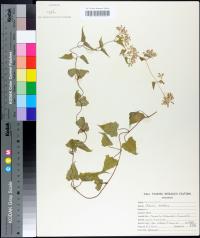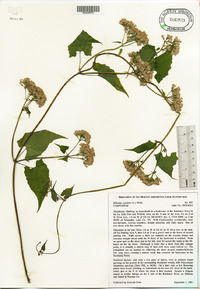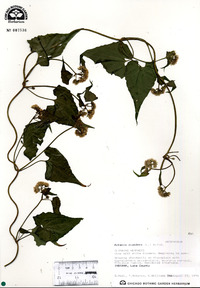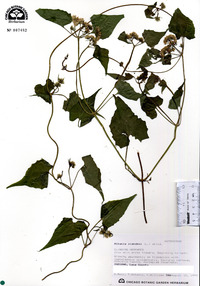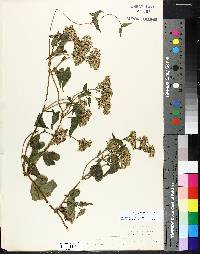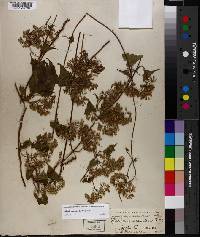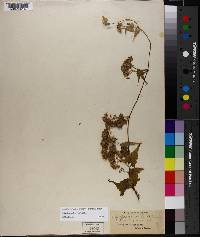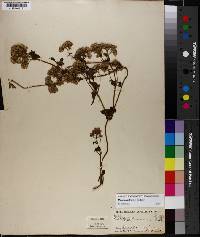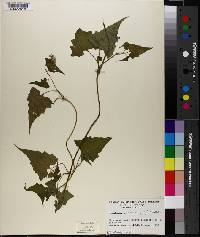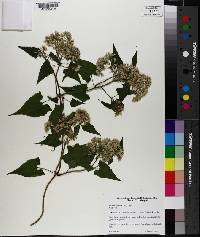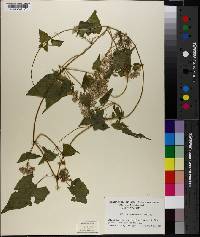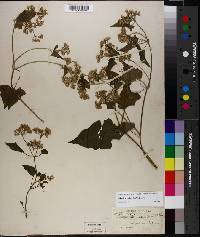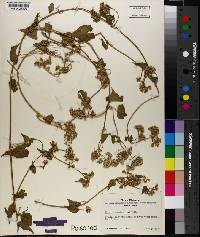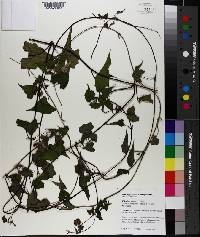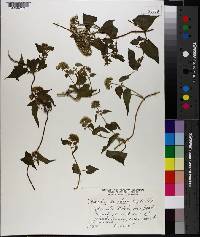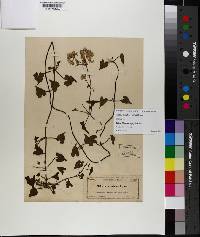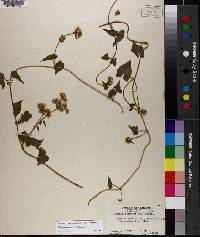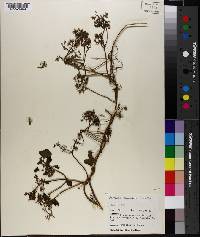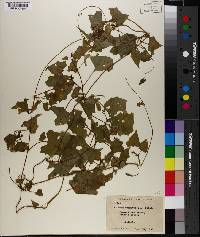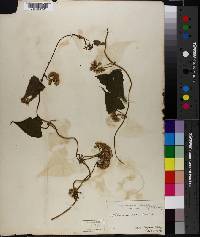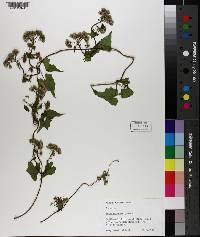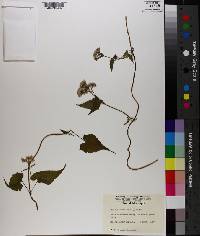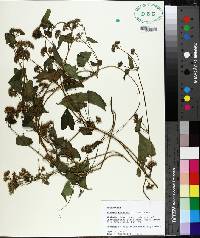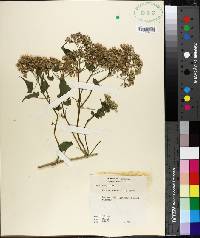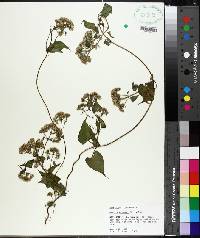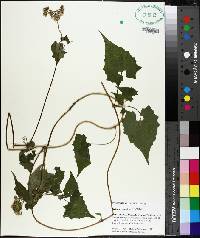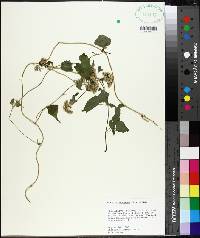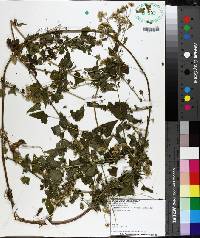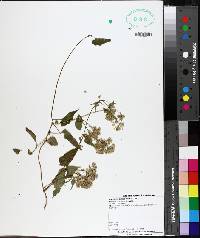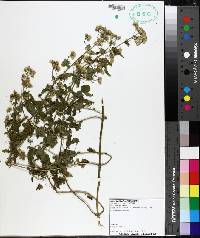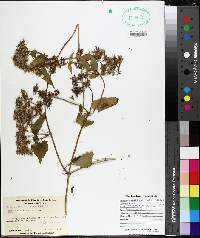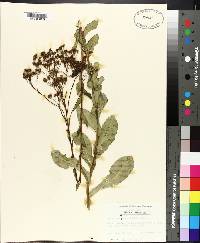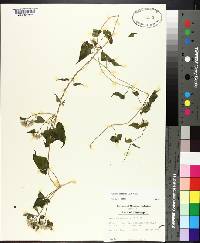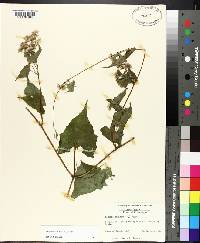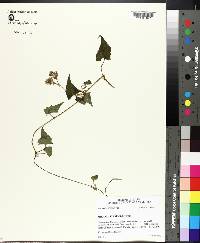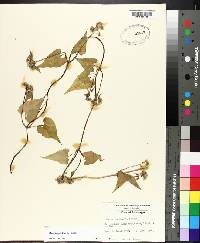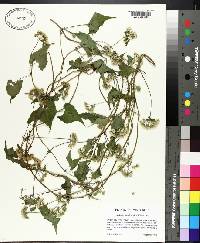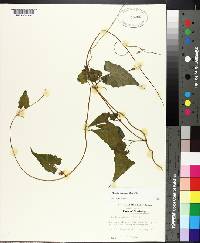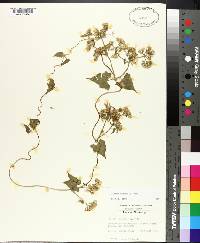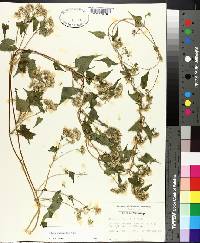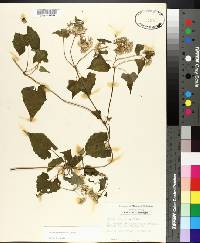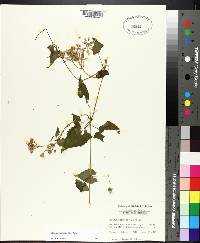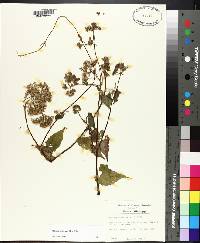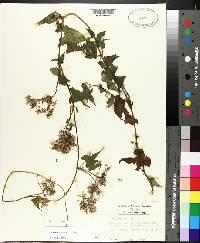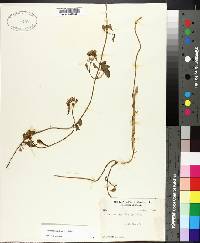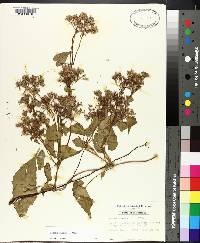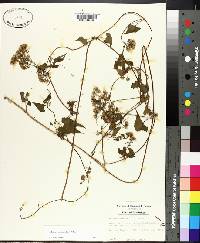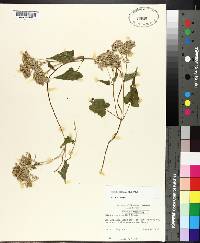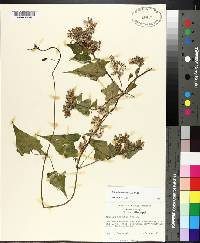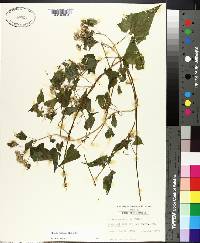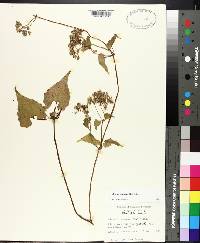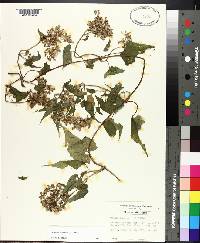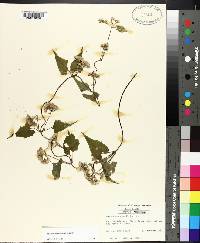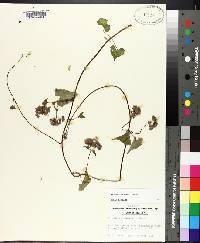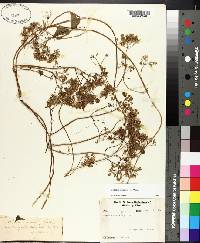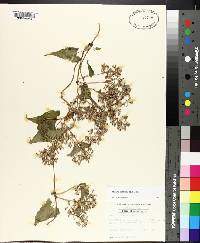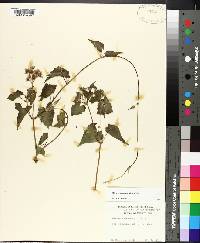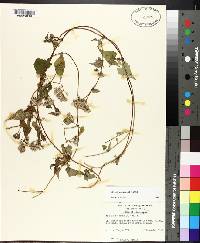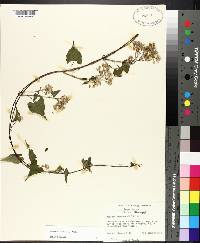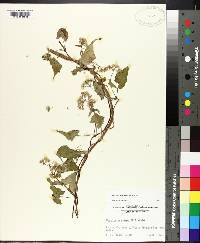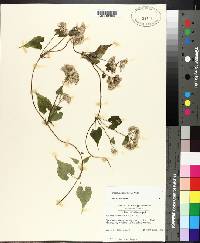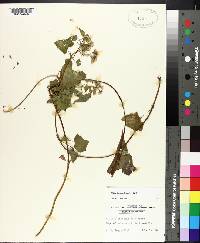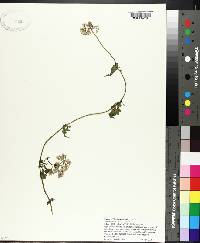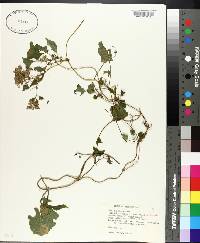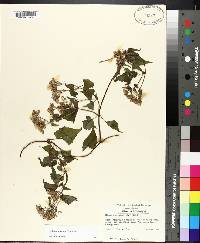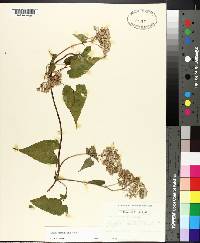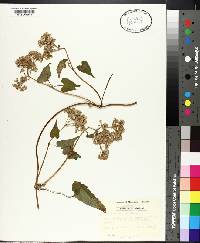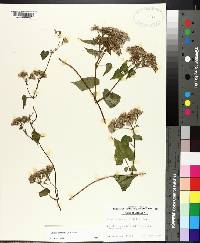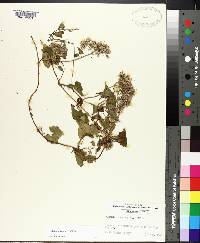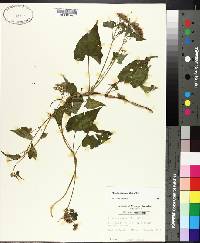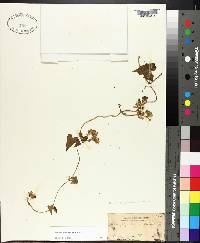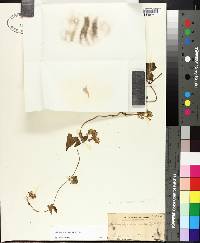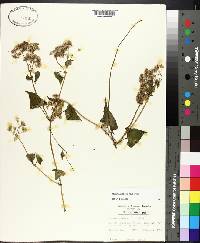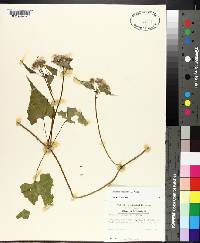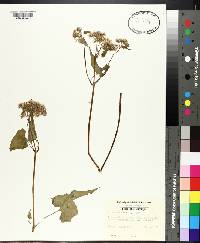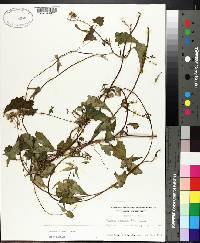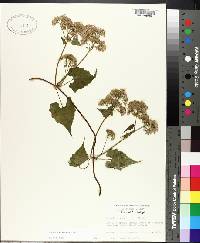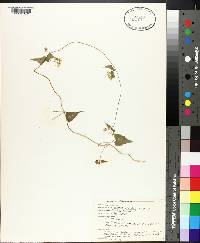
|
|
|
|
Family: Asteraceae
Climbing Hempvine
[Mikania angulosa Raf., moreMikania menispermea , Mikania pubescens , Mikania scandens var. pubescens (Nutt.) Torr. & A.Gray, Willoughbya heterophylla Small, Willoughbya scandens (L.) Kuntze] |
Stems obscurely 6-angled to terete, glabrate to densely pilose; internodes 8-15 cm. Petioles 20-50 mm, glabrous or puberulent. Leaf blades triangular to triangular-ovate, 3-15 × 2-11 cm, bases cordate to hastate, margins subentire to undulate, crenate, or dentate, apices acuminate (tips often caudate), faces puberulent. Arrays of heads dense, corymbiform, 12-15 × 12 cm. Heads 6-7 mm. Phyllaries green or pinkish to purplish, linear to lanceolate, 5-6 mm, apices acuminate (faces glabrous or puberulent). Corollas usually pinkish to purplish, sometimes white, 3-5.4 mm, sparsely gland-dotted, lobes triangular to deltate. Cypselae dark brown to blackish, 1.8-2.2 mm, densely gland-dotted; pappi of 30-37 white or pinkish to purplish bristles 4-4.5 mm. 2n = 38. Flowering Jun-Dec. Wet, open areas along streams, seeps, springs, margins of lakes, swamps; 0-500 m; Ala., Ark., Conn., Del., D.C., Fla., Ga., Ill., Ind., Ky., La., Maine, Md., Mass., Mich., Miss., Mo., N.H., N.J., N.Y., N.C., Okla., Pa., R.I., S.C., Tenn., Tex., Va.; Mexico; West Indies (Bahamas). The name Mikania scandens was once used to refer to most of the slender twiners with sagittate, hastate, or cordate leaf bases and corymbiform capitulescences in tropical and temperate America. As a result of work of B. L. Robinson (1934), the name is now used to refer to plants distributed primarily in eastern United States. Mikania scandens was reported as occurring in Ontario, Canada (M. L. Fernald 1950; J. A. Steyermark 1963); it has been deleted from the flora of Canada (H. J. Scoggan 1978-1979, part 4). The Canadian reports were seemingly based upon misdeterminations and/or 'too loose an application of that name with respect to present political boundaries.' Records of M. scandens from along the Ohio River, Hamilton County, Ohio, are apparently based on non-persistent introductions; the species is apparently extirpated from Indiana, Maine, and Michigan.
Twining herbaceous vine to 5 m, puberulent and somewhat atomiferous to subglabrous; roots fleshy, fascicled; leaves petiolate, deeply cordate, acuminate, entire or sinuately few-toothed, palmately veined, 2.5-14 נ1.5-8.5 cm; infls small and numerous, corymbiform, on axillary peduncles; invol 4-5.5 mm; fls white or pinkish; achenes 1.5-2.5 mm; 2n=38. Climbing on bushes in moist places; on the coastal plain (or near the coast) from Me. to Fla., Ill., and Tex., s. to trop. Amer.; locally inland to Mich., Ind., and Ky.; pantropical. July-Oct. Gleason, Henry A. & Cronquist, Arthur J. 1991. Manual of vascular plants of northeastern United States and adjacent Canada. lxxv + 910 pp. ©The New York Botanical Garden. All rights reserved. Used by permission. From Flora of Indiana (1940) by Charles C. Deam Common in low ground along the Kankakee River at the Baum Bridge, south of Kouts, in Porter County. Here in 1915 it was common especially along the old channel of the river where it was found climbing usually on buttonbush or on tall weeds. Blatchley reported that it was abundant about 50 feet south of the bridge over Sandy Hook Creek about 5 miles east of Hebron, in Porter County. It was reported by Schneck from the Lower Wabash bottoms, and Coulter's Catalogue reports it from Putnam and Tippecanoe Counties on the authority of MacDougal and Wright, respectively. It is, no doubt, very local. .…… Indiana Coefficient of Conservatism: C = 7 Wetland Indicator Status: OBL |
This project was made possible in part by the Institute of Museum and Library Services [MG-70-19-0057-19].
Powered by Symbiota

